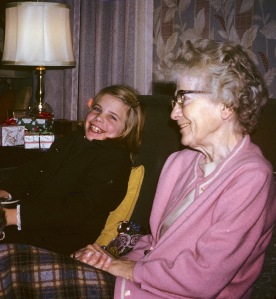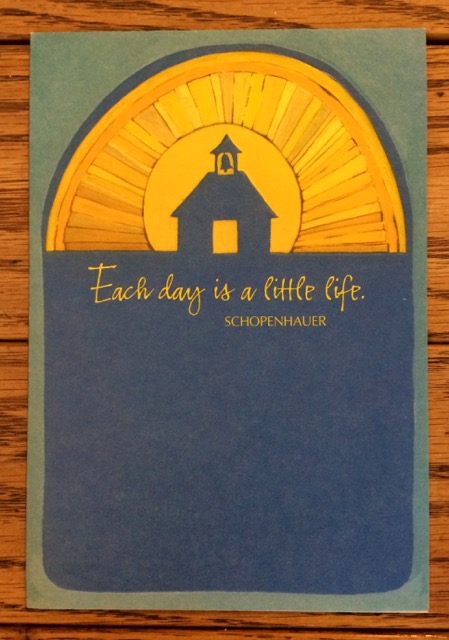It’s been a little quiet on this blog. Instead of putting together thoughts, words, and the occasional coherent sentence, I’ve been putting together packing boxes. This spring I moved.
 There is nothing special about moving. They say that 25 percent of all adults move every year and that the typical American moves 11.7 times in his or her lifetime. If that is true, I have exceeded my quota, but only by a move or two. For me, there have been two childhood homes, the usual smattering of dorms and graduate school apartments, a live-in arrangement at the American Academy of Arts and Sciences, the house I bought on my own in my 20s, four parsonages, two family homes and a cabin on a lake, the house on Norway Hill, and now this house I am renting from friends.
There is nothing special about moving. They say that 25 percent of all adults move every year and that the typical American moves 11.7 times in his or her lifetime. If that is true, I have exceeded my quota, but only by a move or two. For me, there have been two childhood homes, the usual smattering of dorms and graduate school apartments, a live-in arrangement at the American Academy of Arts and Sciences, the house I bought on my own in my 20s, four parsonages, two family homes and a cabin on a lake, the house on Norway Hill, and now this house I am renting from friends.
An Excellent Moving Day
As moves go, this was not a hard one. The distance was short, the help plentiful. The head of my Church Council turned up at 7:30 am and set up a coffee urn borrowed from the Church Vestry. Several kinds of muffins, still hot and zipped into those warming bags that church ladies alone seem to possess, arrived a few minutes later, as did a crew of 18 and six pickup trucks. Three hours later we are sitting around the dining room table at the new house. Placemats and tablecloths had been miraculously extracted from an unlabeled box and layered up into something festive. More food arrived– homemade baked beans, chili, brownies, and sandwiches from Fiddleheads—sturdy, caloric fare that my helpers had more than earned. By noon, their work was done. Mine was just beginning.
 Mixed Feelings
Mixed Feelings
This was only a semi-voluntary move. Had the financial and physical realities of having multiple myeloma not made themselves so utterly plain, I’m sure I’d still be rattling around in a beloved, but too big house at the top of Norway Hill. The neighbors there, both human and ovine, really are everything you dream about neighbors being. And the peonies. I am very sad to have left behind such peonies.
Searching for the positives, it is nice to get ahead things on the downsizing curve, something I can do for my children. Besides, it seems to be all the rage right now to embrace minimalism and move into smaller spaces. I am a devoted listener of The Minimalist Podcast. I’ve watched the documentary. I took a stab at the “sparking joy” approach (a marginal success–although I do thank you, Marie Kondo, for finally teaching me how to fold my clothes). I’ve tried to take lessons from my urban-based children who have marvelous discipline when it comes to acquisition.
The Minimalists Are All So Young…
But the expert minimalists are all so young. Earnest and well intentioned, but so very, very young. If there is a tribe of late-middle-aged minimalists, I have yet to find it. Perhaps this is because it is not easy to shed items that have taken on the personal patina of decades or when the people who once loved these things and entrusted them to you are gone. Far easier, I think, to part with the consumer goods bought in the heat of your first good paying job. It’s like losing weight. Exponentially harder to do at age 60 than at age 30. But still, we keep trying.
Packing as Life-Inspection
My goal is to shake loose about two thirds of my worldly goods. The first third was easy. The second third is proving more difficult. Or at least slow to slip from my stewardship and care. Slow because of the memories stirred up. As the memoirist and Virginia Woolf scholar, Louise De Salvo explains:
It isn’t the packing that causes me pain: it’s that packing forces me to review my entire life—the celebratory times, the painful times. Packing is a full-scale life inspection…Going through all these items makes me think about all the time that has vanished; it forces to recognize what I often overlook; that time is fleeting and our lives are finite.
On Moving: A Writer’s Meditation on New Homes, Old Haunts and Finding Home Again, p.65.
Downsizing is hard work. But enlightening as well as lightening. And what I am finding is what I have known all along. There’s a whole lot of grace tucked away in those packing boxes. Some of the people and things represented are long gone, but the ones that are most important remain with me. Blessings always and forever.














